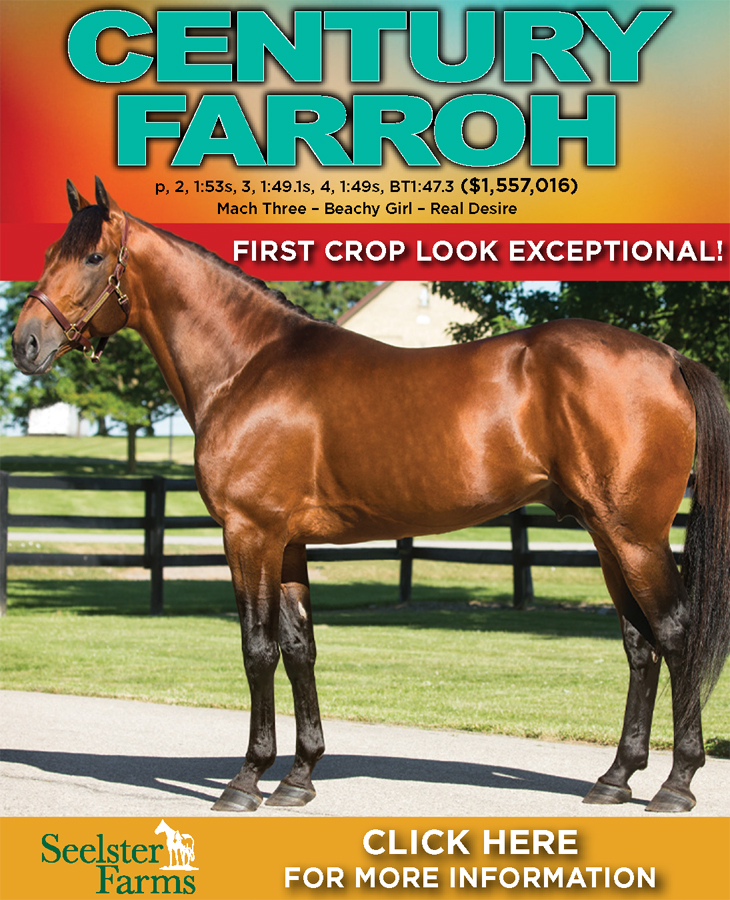

Gural: Dealing with regulators can be maddening
I saw a story about a thoroughbred trainer having difficulties with HISA [the Horseracing Integrity and Safety Authority] and I thought people should know what it’s like to deal with the state regulators.
In 2021, Captain Cowboy, a horse I owned with Ake Svanstedt was disqualified along with four other trainers — Brian Brown, Julie Miller, Bret Schwartz and Doyle Bross. They all had horses disqualified because of a high reading of Dexamethasone. I knew that it was impossible that these five horses all tested positive, and we learned later that the lab was doing a necropsy on a horse that had Dexamethasone in their system. We assumed the split sample would come back negative but that was not the case so the experts I talked to said it had to be a problem in the lab. Easy enough, we asked the state to do a urine sample and we offered to agree that whatever the results of the urine sample showed we would abide by it. To my surprise, the [Ohio] Racing Commission told us that they did not have to do a urine sample and we were out of luck. This was shocking as I had just assumed that they would want to know the truth. The reality was that they had no interest in the truth. My guess is they didn’t want to show that the lab made a mistake as that might hurt them in future cases.
In any case, the lawyer I hired consulted with other experts and we decided to ask a Judge to order them to provide a urine sample since we knew they had the urine available. To make a long story short, after fighting with them for two years they finally agreed without a urine sample to dismiss all five positives and sent the purse money to the owners of the five horses.
That is the good news. The bad news is that my legal fees and the experts we hired combined cost $270,000. We recouped about half of that in purse money. The message here is obviously if you get a positive you have no choice but to just suck it up, pay the fine and take the days. It is literally impossible to prove your innocence without spending a fortune in legal fees.
I hate to agree with Faraldo, but he is right when he talks about these crazy positives based on picograms of some prohibited substance. We are far better off sitting down with HISA and coming up with a plan that we can all agree with in establishing how we can address the positives coming from either lab errors or environmental factors.
Anyone who thinks that dealing with the state regulators is easy is fooling themselves. Had I not been so annoyed at the Ohio Racing Commission’s refusal to order a urine sample I would have never spent all this money. Fortunately, it appears the owners are going to give me the monies they will receive as a result of this effort so I will only have lost about $135,000 trying to prove that these five positives were a mistake.
Jeff Gural / owner The Meadowlands, Tioga Downs, Vernon Downs
Faraldo skeptical about HISA offer
RE: HISA will customize regulations to fit standardbred industry
The RMTC (Racing Medication and Testing Consortium) people too were once open to discussions and customizations for harness racing‘s different performance model, or so we were told. Based upon that expressed openness, for seven years the USTA had a seat at their table and contributed funds to have our talking points heard by the very same people who unfortunately have now been anointed to HISA’s only scientific committee. What makes anyone think that the latest stated openness towards the customization of rules for harness racing is any more meaningful now, than as was promised before? Empty promises are nothing more than that.
What is needed now, and which has been sought from all those alleged to have influence in the process, is the precise wording that will be forthcoming from a special Harness Racing Scientific Committee, not a committee dedicated to the thoroughbred industry. The wording we would need to see is the precise wording that will be sent to the FTC to implement separate but uniform rules that apply to harness racing, when and if harness racing is brought under this private agency’s jurisdiction and/or the creation of a separate Harness Racing Scientific Committee with the same independent powers afforded the current thoroughbred committee, and not subservient to it.
There is no reason to accept empty promises from those same people, now in charge at HISA, who have long stated that a “horse is a horse” no matter how different the breed. The same people who have long refused to recognize such a factual difference in our horses and our performance model. The same people who use boast about using testing methodologies that can prove that a substance permitted to be used within a certain time period, can be detected in a horse way beyond that period or below an already meaningless threshold level then going so far even as to charge a current trainer for an administration that may have occurred when the current trainer did not even have the horse. If the hand writing on the wall is to rid us of race day Lasix, this new approach seems to signal an effort to seriously curtail the use of therapeutic medications altogether.
Different breeds should have rules that are uniform, with scientifically based sensible threshold levels. Rules designed to apply specifically to the harness racing industry uniform throughout every state developed by our own scientific committee.
Joe Faraldo / chair United States Trotting Association
American Winner should be in the Hall of Fame
American Winner is a horse, that I feel, is long overdue for inclusion in the Harness Racing Hall of Fame. The colt, by Super Bowl, was a sensational performer on the track and a stallion whose name has been scattered through the pedigrees of top performers for over two decades.
On the track, he was not only a world champion racehorse that garnered attention due to his patriotic name and racing colors, but also a horse that traveled the country while piling up Grand Circuit wins in trotting’s biggest races against top competition. His legacy continues to live on today through his ability to pass his genes to some of racings most accomplished trotters.
I am aware that there are “benchmarks” and certain statistics that are often looked at when deciding if a particular horse is worthy of recognition or not. That is a fair process that places appropriate guidelines for inclusion, but I strongly believe this horse was ahead of his time on the racetrack and has somehow been overlooked throughout the years. Just a simple opening of the Stallion book, and one can see that his name is littered through the pedigrees, not just of the stallions but of their progeny as a very productive broodmare sire.
American Winner was the third foal out of Hall of Fame broodmare BJ’s Pleasure, herself a sister to Mack Lobell. The colt was a homebred for owners Bob Key and Dr. John Glesmann. Anyone that was familiar with Mr. Key would probably tell you that he was certainly unconventional and sometimes perplexing in the way he managed his horses. While Mr. Key, in his own right, should be a Hall of Fame candidate simply based off the wins and numbers he compiled during his 40+ years as one of the sport’s most passionate owners, he may have added a hurdle or two for American Winner from the track to the breeding shed.
Inarguably, the stallion’s greatest ancestral achievement is through his daughters, most notably, Yankee Blondie, the dam of Muscle Hill. Contributing a quarter of the genes to perhaps the greatest trotting racehorse and sire that has ever lived is no small feat. He is also the sire or broodmare sire and to many other great horses, including seven world champions, 10 millionaires and plenty of quality racehorses. I have listed a few statistics and facts below to support American Winner’s status as a Hall of Fame horse and a true contributor to what the standardbred trotter is today.
American Winner as a racehorse:
The bay colt had several trainer changes during his time on the circuit, the most significant being before the beginning of the major 3-year-old stakes races in 1993. After his current trainer resigned, ownership decided to hand over the lines to Milton Smith, who at the time was employed by Mr. Key as a horse transporter. Obviously, that decision would pay off as not only did Milton Smith become the first African-American trainer to win the Hambletonian, but he became only the second since Billy Haughton to win both eliminations and the final in harness racing’s biggest race.
At age 3, American Winner won 15 of 22 starts, was second four times, and third two times for $1,299,468. Only once was he out of the money. His main rival, Hall of Fame horse Pine Chip, sports similar stats from 24 starts: he was 16-4-1 to earn $1,363,483 with the same world record-setting mark of 1:52.3. At the time, this was the second fastest mile in history for any trotter. Despite a rigorous schedule and soreness, he still came home third in his 22nd start of the season in the Breeders Crown 3-year-old trot.
From May to mid-September, he tore through the Grand Circuit where he won 14 of 15 (second once), including a streak of nine in a row. During this stretch he conquered the Hambletonian (stakes record), Yonkers trot (stakes record), Dexter Cup, Currier and Ives, and the Zweig (world record). Five of these miles were in 1:54 or quicker, blazing speed in 1993. He won the Yonkers Trot going away by 10 ½ lengths. And not only was his Hambletonian victory a new record, it beat Mack Lobell’s record by a full second.
From the seven times that he did not cross the wire first, six of them were respectable losses to Hall of Fame horse Pine Chip. Other notables he was defeating during this season; SJ’s Photo ($1,300,946), Hi Noon Star ($859,264), Toss Out, Striking Sahbra.
American Winner as a sire:
His greatest son on the track and in the breeding shed is Hall of Fame horse Credit Winner, winner of just shy of $1.5 million. Credit Winner has gone on to have a very successful career as a stallion, producing horses such as: Devious Man, Chocolatier, Crazed, Archangel, Dejarmbro, among many others. American Winner’s genes are also shown through Credit Winner’s success as a broodmare sire with recent horses like Ready for Moni, Raised by Lindy, and Play Trix On Me.
Furthermore, American Winner has made his mark overseas as well, siring the likes of Viking Kronos, who was a European sensation and sire of Maharaj and broodmare sire of current stallion, Readly Express.
As a stallion he never produced the number of foals as many commercial stallions. This was largely due to his owner utilizing him to breed mostly his own mares. Other than his first crops, where he stood at Hanover, he did not reside at one of the breed’s premiere stallion farms. However, despite his smaller crops he still managed to sire an extraordinary number of fast and lucrative offspring. In comparison to some of his “peers” and his own best son, you can see that even while his production was less, he stayed very comparable with the speed and quality to these other dominant stallions.
#Starters 1:55or better 100k+ Winners
Valley Victory 354 33 (12%) 87 (32%)
Pine Chip 547 38 (9%) 66 (16%)
Muscles Yankee 1089 145 (17%) 263 (31%)
American Winner 373 21 (8%) 76 (26%)
Credit Winner 1113 163 (18%) 313 (36%)
American Winner as a broodmare sire:
This is where American Winner’s legacy can be seen the clearest. To start, he was the broodmare sire of 169 $100,000 winners from only 532 starters. From these same starters came 10 millionaire horses in America. This list also displays seven world champions that include: Muscle Hill, Maven, Break the Bank K, Sand Vic, Classic Photo, and Win Missy B (2 Heat World Champion).
Some other impressive horses on this list include: Solveig, the dam of Uncle Lasse and of three-time Dan Patch winner Shake It Cerry. Also, on the list is Winning Mister, another world champion millionaire racehorse and six-time track record breaker.
His greatness has also shown to carry through with successful inbreeding that can be seen in some of the best trotters of the last decade. These 3×3 crosses include; Hambletonian winner Royalty For Life, superstar sires Bar Hopping and Resolve, young sire You Know You Do, as well stakes-winning horses like Looking For Zelda, and the blazing fast filly Asiago.
When compared again to some of his “peers” he seems to hold up well. As a broodmare sire, again, despite smaller numbers, his 10 millionaires are certainly in the company of other Hall of Famers: Valley Victory (7), Andover Hall (9) Cantab Hall (7), Pine Chip (6), Credit Winner (4). Among these, only Muscles Yankee has more, with 14.
#Starters 1:55 or better 100k+ Winners
Valley Victory 864 112 (13%) 231 (27%)
Pine Chip 1167 137 (12%) 242 (21%)
Muscles Yankee 1675 267 (16%) 371 (22%)
American Winner 710 103 (15%) 171 (24%)
Credit Winner 1003 159 (16%) 220 (22%)
I believe the legacy of greatness that American Winner has left for today’s trotters is apparent and undeniable. From his speed and dominance on the track, to his ability to pass that excellence on to further generations of trotters all over the globe, he is most definitely a horse deserving of the honor. Again, I understand that today there are certain boxes to check and stats to compile, but I believe this horse’s performance both on and off the track are Hall of Fame worthy. I passionately believe that the Harness Racing Hall of Fame would be leaving a void in the breed’s history without the inclusion of a horse that has contributed so much to racing history and to the pedigrees of today’s best trotters.
Eric Crocker / Winning Key Farm














